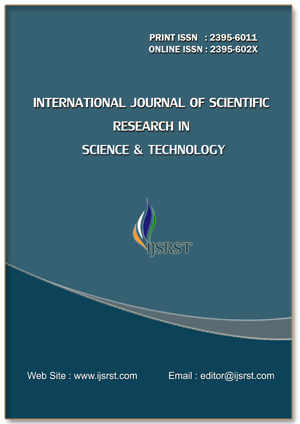An Analysis of Sexual Abuse of Women In India : A Social Crime Study
Keywords:
Sexual Abuse, Crime, Women, ViolenceAbstract
The study was fundamentally exploratory, as its title suggests, focussing exclusively on the themes discussed without the intention of offering definitive solutions to existing issues. Exploratory research aims to clarify the nature of the issue and does not seek to produce conclusive proof; instead, it enhances our understanding of the situation. The examination employed a non-probability testing method, notably utilising convenience sampling to gather data. The data was gathered with the overview method via an online survey administered through the 'Google Doc research tool'. Approximately one hundred (100) women from urban locations, including Delhi, Mumbai, and Pune, participated in the study. The news media, encompassing print, electronic, and internet formats, has been recognised as a principal contributor to the cultivation of vulnerabilities and anxieties, rather than aiding individuals in managing these sentiments of unease. Thus, it is inferred from the hypothesis that the persistent reporting of crimes against women increases the vulnerability and danger faced by metropolitan women.
References
- About violence against women. (n.d.). End violence against women. Retrieved February 3, 2015, from http://www.endviolenceagainstwomen.org.uk/preventingviolence-against-women-media-152.
- Bruce Sacerdote, Harvard University , 1996, “Why is there more crimes in cities”, NBER working paper 5430
- Das, R. (n.d.). Representation of Violence against Women in Indian Print Media: A Comparative Analysis. Global Media Journal, 3(1), 1-1.
- Das, R. (n.d.). Representation Of Violence Against Women In Indian Print Media: A Comparative Analysis. Global Media Journal, 3(1), 1-1.
- doi:10.1207/ss53278f25mcs0902_2.
- Grabe, M., Trager, K., Lear, M., & Rauch, J. (2006). Gender in Crime News: A Case Study Test of the Chivalry Hypothesis. Mass Communication and Society, 9(2), 137-163.
- Humphries, D. (2009). Introduction. In Women, Violence, and the Media: Readings in Feminist Criminology (p. 7). Lebanon: Northeastern University Press.
- Leveson Inquiry. (2012, December 1). Retrieved February 9, 2015, from http://en.wikipedia.org/wiki/Leveson_Inquiry
- Malamuth, N., & Check, J. (1981). The effects of mass media exposure on acceptance of violence against women: A field experiment. Journal of Research in Personality, 15(4), 436-436.
- Malamuth, N., &Briere, J. (1986). Sexual Violence in the Media: Indirect Effects on Aggression Against Women. Journal of Social Issues, 42(3), 75–92.
- NAVTEQ is an American Chicago-based provider of Geographic Information Systems (GIS) data and a major provider of base electronic navigable maps.
- Over 50% of Women Feel Unsafe on Indian Roads: NAVTEQ-TNS Survey. (2011, December 9). Retrieved February 15, 2015, from http://www.directionsmag.com/pressreleases/over-50-ofwomen-feel-unsafe-on-indian-roads-navteq-tnssurvey/219220
- Study: TV Violence Linked to 'Mean World Syndrome' (2014, January 1). The Hollywood Reporter.Annenberg Public Policy Center.
- Taylor Nelson Sofress a leading market research and market information group.
- Topping, A. (2011, December 29). Leveson inquiry should address media sexism, women's groups demand. Retrieved February 13, 2015, from http://www.theguardian.com/media/2011/dec/29/levesoninquiry-should-address-media-sexism
Downloads
Published
Issue
Section
License
Copyright (c) IJSRST

This work is licensed under a Creative Commons Attribution 4.0 International License.

